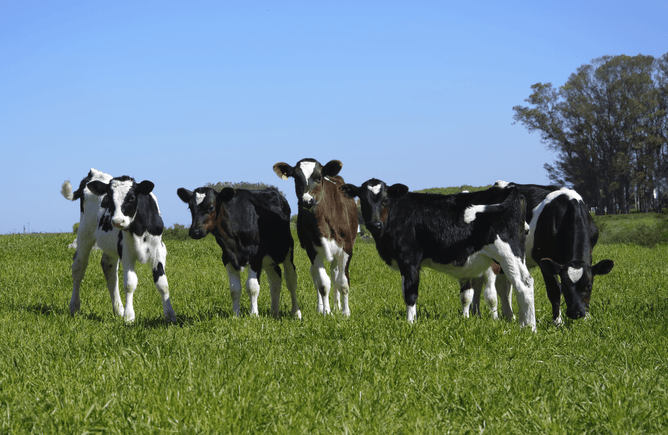Coccidiosis is a parasitic disease that can occur in calves from as young as 4 weeks of age, but normally between 3-8 months. Infection is by ingestion of coccidia oocysts, from contaminated pasture, feed, water or grooming each other. Paddocks that are used by calves each year are at a higher risk for contamination.
The oocysts survive well in moist environmental conditions. The incubation period is about 2-4 weeks for clinical disease, depending on environmental conditions. It is a parasite that is often around in low numbers, and clinical disease occurs if animals are exposed to high numbers or have a decreased immune system.
Symptoms
Symptoms can vary a lot between infected groups, with infection ranging from mild subclinical disease to severe clinical disease, and sometimes death. Growth rates are often affected.
Clinical disease:
Diarrhoea with mucus and blood;
Straining to poo;
Off feed;
Dehydrated;
Rapid weight loss.
Subclinical disease:
Mild or no diarrhoea;
Reduced feed intake;
Decreased growth rates;
Rough coats (calves that just don’t look as ‘good’ as they should).
Risk periods
Clinical coccidiosis occurs about 4 weeks after calves go out onto grass, or after calf meal has stopped being fed. Most commercial calf meals contain coccidiostats, which only stop development of oocysts. So, when feeding stops, these parasites sometimes continue development, resulting in cases of disease 3-4 weeks later.
Other risk periods include any times of stress, such as: moving, regrouping, transport, weaning etc.
Diagnosis
We can test for coccidia oocysts in Faecal Egg Counts. The number of oocysts doesn’t always correlate with the level of disease, due to the way the test works, but, if there are oocysts found and the clinical signs are consistent, then we can be confident it is a coccidia infection.
Treatment
Due to the wet spring we have had so far, coccidia could be more of an issue than usual this year. FEC tests are a great way to check not only the coccidia levels in your calves, but also the general parasite challenge, which can help us to use the correct drench options.
The best way to prevent/treat the disease is with a drench containing a toltrazuril-based product. Toltrazuril products only treat coccidia, not normal gut worms and timing is important.
If you have had issues in the past, treatment should be 7-10 days before the risk period. If you are unsure of your risk period, treatment can be carried out at the time of meal withdrawal. Due to the high level of subclinical disease, all calves within the group should be treated even if only a couple of them are showing signs.
There is another product on the market - Turbo Initial. This is a dual-combination parasite drench combined with an anticoccidial, designed to be used in the transition phase when calves are weaned off meal containing coccidiostats and moving to pasture as their main source of nutrition. Talk to us today about incorporating this new drench into your calf rearing regime.

